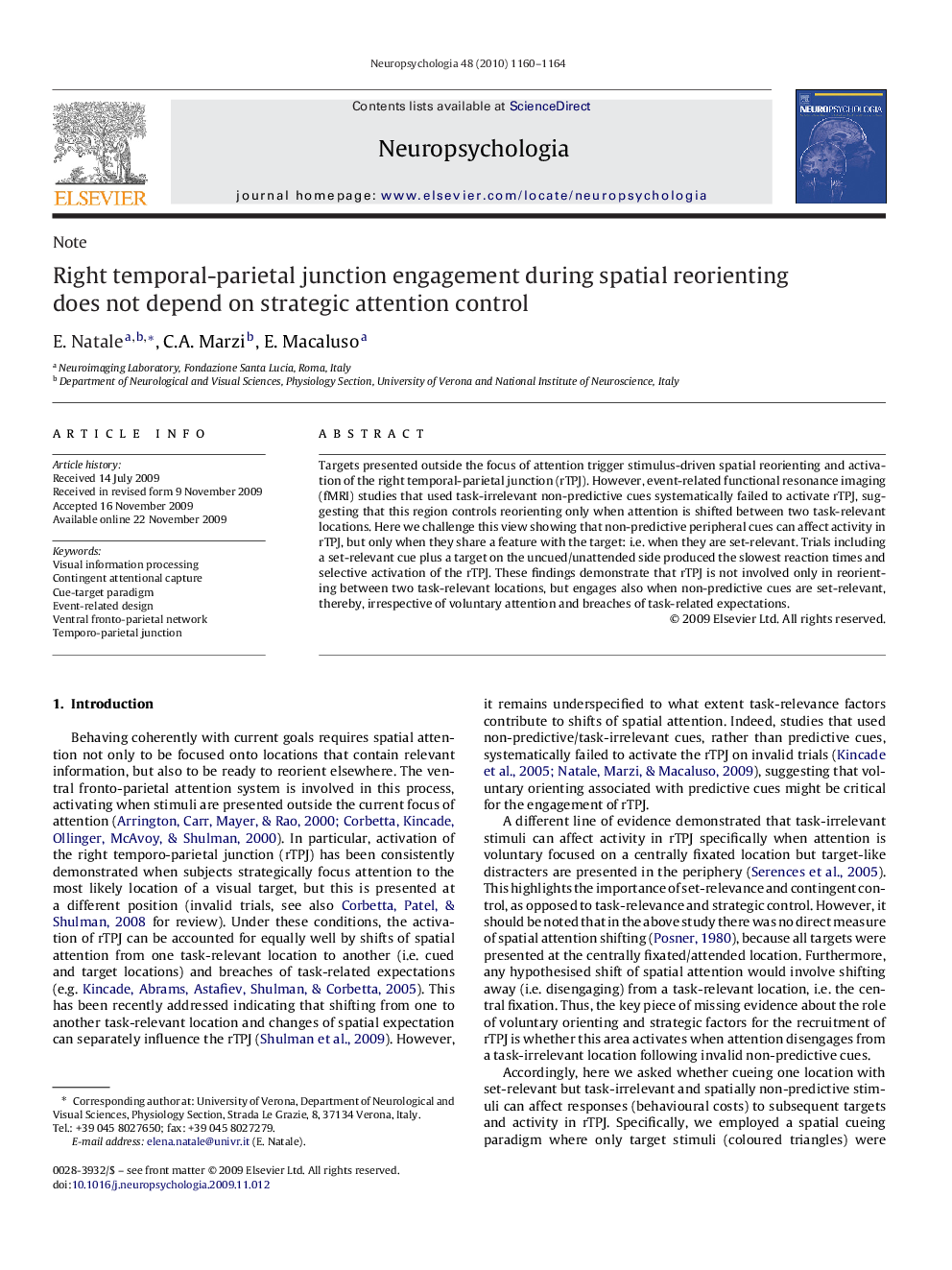| Article ID | Journal | Published Year | Pages | File Type |
|---|---|---|---|---|
| 10466113 | Neuropsychologia | 2010 | 5 Pages |
Abstract
Targets presented outside the focus of attention trigger stimulus-driven spatial reorienting and activation of the right temporal-parietal junction (rTPJ). However, event-related functional resonance imaging (fMRI) studies that used task-irrelevant non-predictive cues systematically failed to activate rTPJ, suggesting that this region controls reorienting only when attention is shifted between two task-relevant locations. Here we challenge this view showing that non-predictive peripheral cues can affect activity in rTPJ, but only when they share a feature with the target: i.e. when they are set-relevant. Trials including a set-relevant cue plus a target on the uncued/unattended side produced the slowest reaction times and selective activation of the rTPJ. These findings demonstrate that rTPJ is not involved only in reorienting between two task-relevant locations, but engages also when non-predictive cues are set-relevant, thereby, irrespective of voluntary attention and breaches of task-related expectations.
Related Topics
Life Sciences
Neuroscience
Behavioral Neuroscience
Authors
E. Natale, C.A. Marzi, E. Macaluso,
